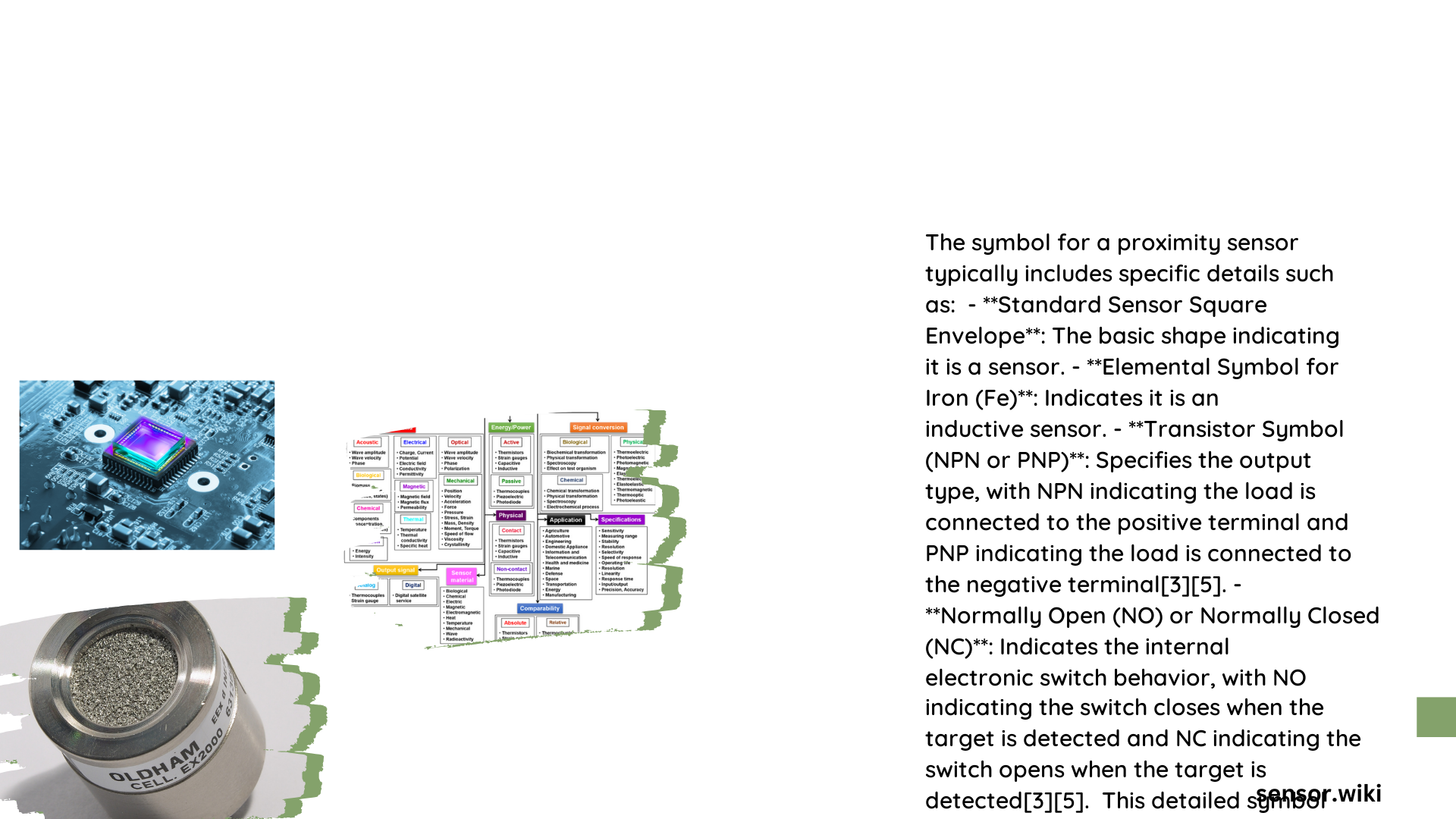Proximity sensors are critical components in modern industrial and electronic systems, with their symbols serving as a universal language for engineers and technicians. The prox sensor symbol, characterized by its distinctive diamond shape, encapsulates crucial information about sensor type, configuration, and operational characteristics, providing a standardized visual representation that communicates complex technical details at a glance.
What Makes the Prox Sensor Symbol Unique?
The prox sensor symbol is more than just a graphical representation—it’s a comprehensive communication tool that conveys multiple layers of technical information. Let’s break down its essential components and significance.
How Does the Diamond Shape Define Sensor Detection?
The diamond-shaped symbol is not arbitrary but strategically designed to represent the sensor’s detection capabilities:
- Four-Point Representation: Each point of the diamond symbolizes the sensor’s multi-directional detection field
- Universal Recognition: Standardized by the International Electrotechnical Commission (IEC)
- Visual Indication: Immediately communicates non-contact sensing capabilities
What Information Can Be Extracted from the Symbol?
| Symbol Element | Information Conveyed |
|---|---|
| Transistor Markings | NPN or PNP configuration |
| Internal Switch | Normally Open (NO) or Normally Closed (NC) |
| Material Indicators | Ferrous (Fe) or non-ferrous detection |
What Are the Different Proximity Sensor Symbol Variations?
Proximity sensor symbols vary based on their specific detection technology:
- Inductive Proximity Sensors
- Marked with “Fe”
- Detect ferrous metallic objects
-
Use electromagnetic field principles
-
Capacitive Proximity Sensors
- Can detect metallic and non-metallic materials
- Broader sensitivity range
-
Often include additional sensitivity markers
-
Optical Proximity Sensors
- Represent light beam interruption detection
- May include light source and detector elements
- No ferrous material marking
How to Interpret Sensor Output Configurations?
Understanding the prox sensor symbol’s output configuration is crucial for proper circuit integration:
- NPN Sensors
- Emitter connected to negative rail
- Current sinking configuration
-
Typically used in industrial control systems
-
PNP Sensors
- Emitter connected to positive rail
- Current sourcing configuration
- Common in automotive and consumer electronics
What Factors Influence Sensor Symbol Interpretation?
Several critical factors must be considered when analyzing a prox sensor symbol:
- Nominal detection range
- Target material characteristics
- Environmental interference potential
- Power supply requirements
- Switching frequency capabilities
Technical Considerations for Prox Sensor Symbol Reading

Accurate symbol interpretation requires a holistic understanding of:
– Electrical specifications
– Mechanical design constraints
– Application-specific requirements
– Standardized color coding (brown: +V, blue: ground, black: signal)
Best Practices for Symbol Analysis
- Always verify manufacturer’s specific documentation
- Cross-reference symbol details with technical datasheets
- Consider environmental operating conditions
- Understand circuit integration requirements
Conclusion
The prox sensor symbol represents a sophisticated visual language that communicates complex technical information through a standardized, intuitive design. By understanding its nuanced elements, engineers and technicians can quickly assess sensor capabilities and integration potential.
Reference:
– Instrumentation Tools
– VIOX ELECTRIC
– LunchBox Sessions
